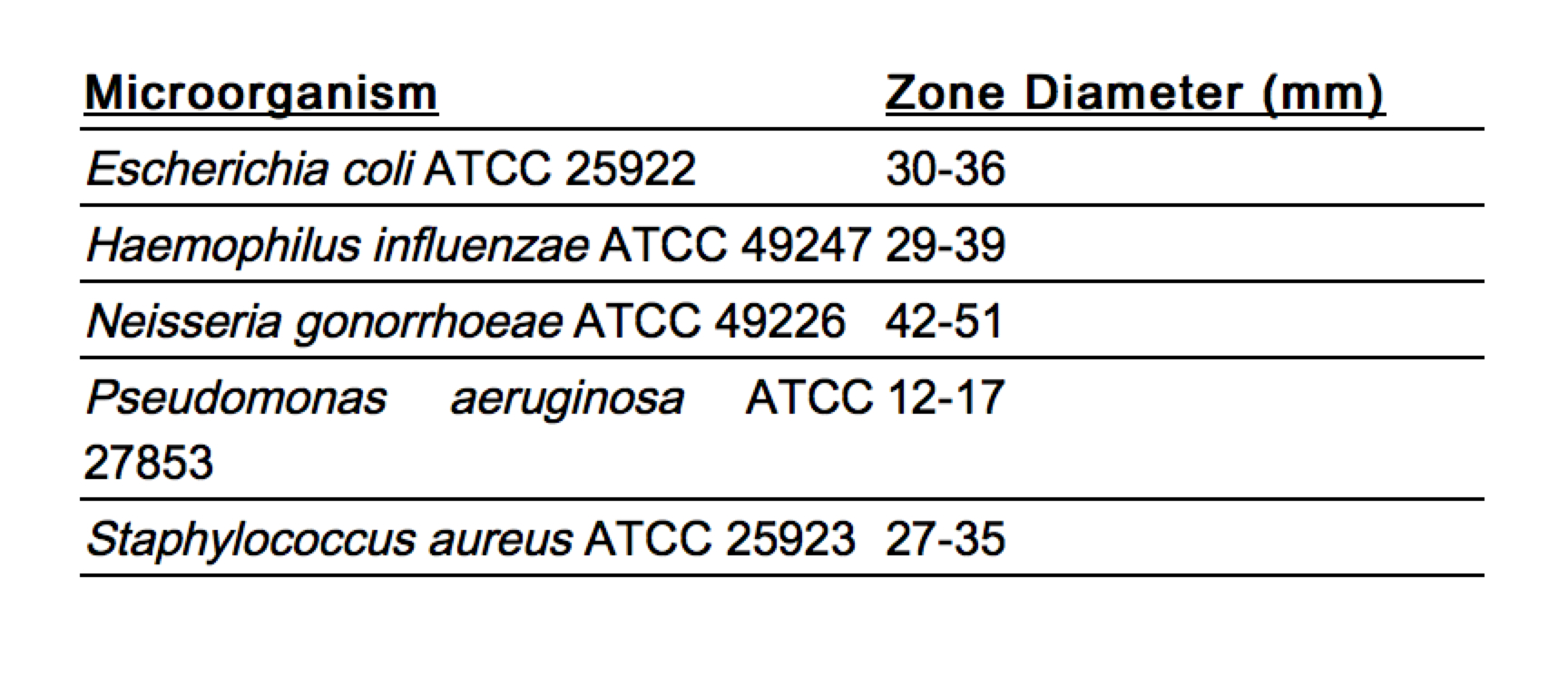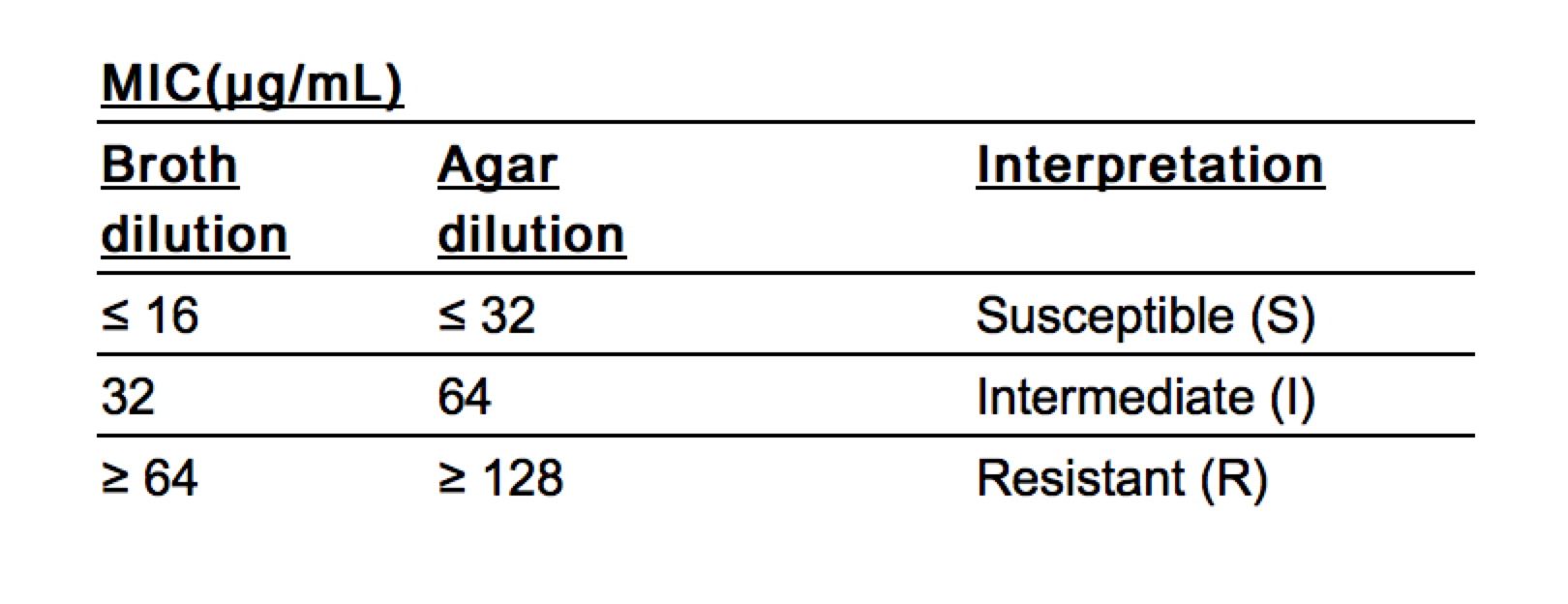Ceftizoxime microbiology
Editor-In-Chief: C. Michael Gibson, M.S., M.D. [1]
Microbiology
The bactericidal action of ceftizoxime results from inhibition of cellwall synthesis. Ceftizoxime is highly resistant to a broad spectrum of betalactamases (penicillinase and cephalosporinase), including Richmond types I, II, III, TEM, and IV, produced by both aerobic and anaerobic grampositive and gramnegative organisms. Ceftizoxime has been shown to be active against most strains of the following microorganisms, both in vitro and in clinical infections described in the INDICATIONS AND USAGE section:
Aerobic Gram-Positive Microorganisms
- Staphylococcus aureus (including penicillinase producing strains)
- Staphylococcus epidermidis (including penicillinase producing strains)
- Streptococcus agalactiae
- Streptococcus pneumoniae
- Streptococcus pyogenes
NOTE: Methicillinresistant staphylococci are resistant to cephalosporins, including ceftizoxime. NOTE: A streptococcal isolate that is susceptible to penicillin can be considered susceptible to ceftizoxime.4 NOTE: Ceftizoxime is usually inactive against most strains of Enterococcus faecalis.
Aerobic Gram-Negative Microorganisms
- Enterobacter spp.
- Escherichia coli
- Haemophilus influenzae (including ampicillinresistant strains)
- Klebsiella pneumoniae
- Morganella morganii
- Neisseria gonorrhoeae
- Proteus mirabilis
- Proteus vulgaris
- Providencia rettgeri
- Pseudomonas aeruginosa
- Serratia marcescens
Anaerobic Microorganisms
- Bacteroides spp.
- Peptococcus spp.
- Peptostreptococcus spp.
The following in vitro data are available, but their clinical significance is unknown. At least 90% of the following microorganisms exhibit an in vitro minimum inhibitory concentration (MIC) less than or equal to the susceptible breakpoint for ceftizoxime. However, the safety and effectiveness of ceftizoxime in treating clinical infections due to these microorganisms have not been established in adequate and well-controlled clinical trials.
Aerobic Gram-Negative Microorganisms
- Aeromonas hydrophila
- Citrobacter spp.
- Moraxella catarrhalis
- Neisseria meningitis
- Providencia stuartii
Susceptibility Testing Methods
Dilution techniques
Quantitative methods are used to determine antimicrobial minimum inhibitory concentrations (MICs). These MICs provide estimates of the susceptibility of bacteria to antimicrobial compounds. The MICs should be determined using a standardized procedure. Standardized procedures are based on a dilution method1 (broth or agar) or equivalent with standardized inoculum concentrations and standardized concentrations of ceftizoxime powder. The MIC values should be interpreted according to the following criteria:
 |
 |
 |
A report of “Susceptible” indicates that the pathogen is likely to be inhibited if the antimicrobial compound in the blood reaches the concentrations usually achievable. A report of “Intermediate” indicates that the result should be considered equivocal, and, if the microorganism is not fully susceptible to alternative, clinically feasible drugs, the test should be repeated. This category implies possible clinical applicability in body sites where the drug is physiologically concentrated or in situations where high dosage of drug can be used. This category also provides a buffer zone, which prevents small-uncontrolled technical factors from causing major discrepancies in interpretation. A report of “Resistant” indicates that the pathogen is not likely to be inhibited if the antimicrobial compound in the blood reaches the concentrations usually achievable, other therapy should be selected. Standardized susceptibility test procedures require the use of laboratory control microorganisms to control the technical aspects of the laboratory procedures. Standard ceftizoxime powder should provide the following MIC values:
 |
Diffusion Techniques
Quantitative methods that require measurement of zone diameters also provide reproducible estimates of the susceptibility of bacteria to antimicrobial compounds. One such standardized procedure2 requires the use of standardized inoculum concentrations. This procedure uses paper disks impregnated with 30-μg ceftizoxime to test the susceptibility of microorganisms to ceftizoxime.
Reports from the laboratory providing results of the standard single-disk susceptibility test with a 30-μg ceftizoxime disk should be interpreted according to the following criteria:
 |
 |
 |
Interpretation should be as stated above for results using dilution techniques. Interpretation involves correlation of the diameter obtained in the disk test with the MIC for ceftizoxime.
As with standardized dilution techniques, diffusion methods require the use of laboratory control microorganisms that are used to control the technical aspects of the laboratory procedures. For the diffusion technique, the 30-μg ceftizoxime disk should provide the following zone diameters in these laboratory test quality control strains:
 |
Anaerobic Techniques
For anaerobic bacteria, the susceptibility to ceftizoxime as MICs can be determined by standardized test methods. Agar dilution results can vary widely when using ceftizoxime. It is recommended that broth microdilution method be used when possible.3 The MIC values obtained should be interpreted according to following criteria:
 |
Interpretation is identical to that described in Susceptibility Testing: Dilution Techniques. As with other susceptibility techniques, the use of laboratory control microorganisms is required to control the technical aspects of the laboratory standardized procedures. Standardized ceftizoxime powder should provide the following MIC values:
 |
Susceptibility Testing for Pseudomonas in Urinary Tract Infections
Most strains of Pseudomonas aeruginosa are moderately susceptible to ceftizoxime.
Ceftizoxime achieves high levels in the urine (greater than 6000 μg/mL at 2 hours with 1 gram IV) and, therefore, the following zone sizes should be used when testing ceftizoxime for treatment of urinary tract infections caused by Pseudomonas aeruginosa.
Susceptible organisms produce zones of 20 mm or greater, indicating that the test organism is likely to respond to therapy.
Organisms that produce zones of 11 to 19 mm are expected to be susceptible when the infection is confined to the urinary tract (in which high antibiotic levels are attained).
Resistant organisms produce zones of 10 mm or less, indicating that other therapy should be selected.[1]
References
Adapted from the FDA Package Insert.